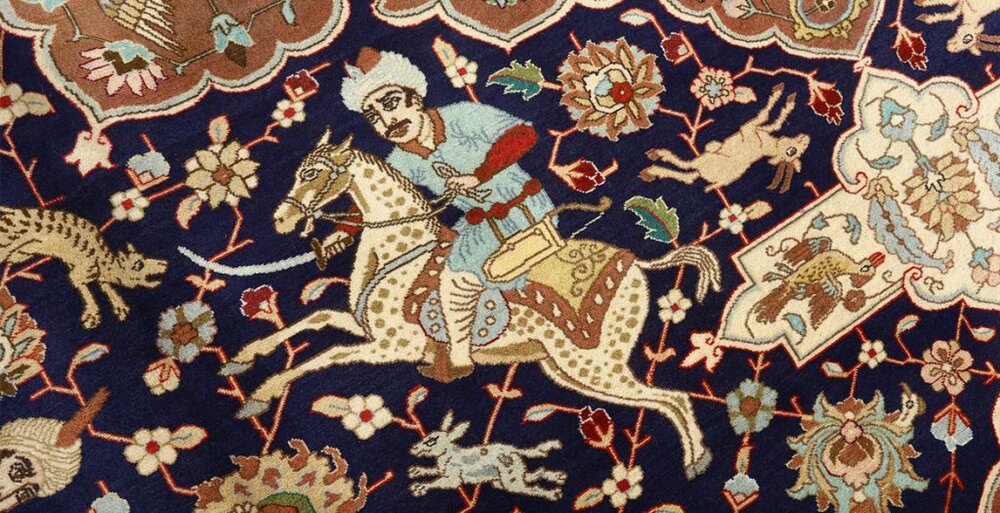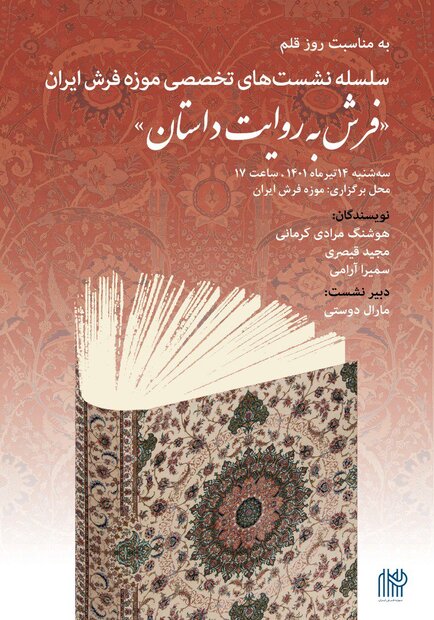Experts to discuss traces of Persian carpets in literature

TEHRAN – A number of novelists and short story writers are scheduled to discuss the impact of Persian carpets and rugs on Iranian literature.
The meeting named “Carpets Through Stories” will be held on Tuesday evening at the Carpet Museum of Iran in downtown Tehran, CHTN reported.
Bearing a wide variety of patterns, themes, and colors, Persian carpets have been a pillar of Iranian houses, their narratives, and stories for millennia.
Lecturers at the event are Houshang Moradi Kermani, Majid Qeysari, and Samira Arami, according to organizers.

Persian carpets are sought after for their appealing features, intricate designs, and convenience. Experts say medallion patterns are arguably the most characteristic feature of the Persian carpets.
Each Persian carpet is a scene that seems as ageless, a procedure that can take as long as a year, these efforts have long put Iran’s carpets among the most complex and labor-intensive handicrafts in the world. When the weaving is finally done, the carpet is cut, washed, and put out in the sun to dry.
Weavers spend several months in front of a loom, stringing and knotting thousands of threads. Some practice established patterns, some make their own.
Throughout history, invaders, politicians, and even enemies have left their impact on Iran’s carpets. As mentioned by Britannica Encyclopedia, little is known about Persian carpet making before the 15th century, when art was already approaching a peak.
For instance, the Mongol invasion of the 13th century depressed Persia’s artistic life, only partially restored by the renaissance under the Mongol Il-Khan dynasty (1256–1353). Although the conquests of Timur (died 1405) were in most respects disastrous to Persia, he favored artisans and spared them to work on his great palaces in Samarkand.
Later in the 17th century, there was a growing demand for the production of so many gold-and silver-threaded carpets that were ultimately exported to Europe. Some were made in Kashan, but many of the finest came from Isfahan. With their high-keyed fresh colors and opulence, they have affinities with European Renaissance and Baroque idioms.
At the end of the 17th century, nomads and town dwellers were still making carpets using dyes developed over centuries, each group maintaining an authentic tradition. Not made for an impatient Western market, these humbler rugs of the “low school” are frequently beautifully designed and are of good material and technique.
AFM
Leave a Comment